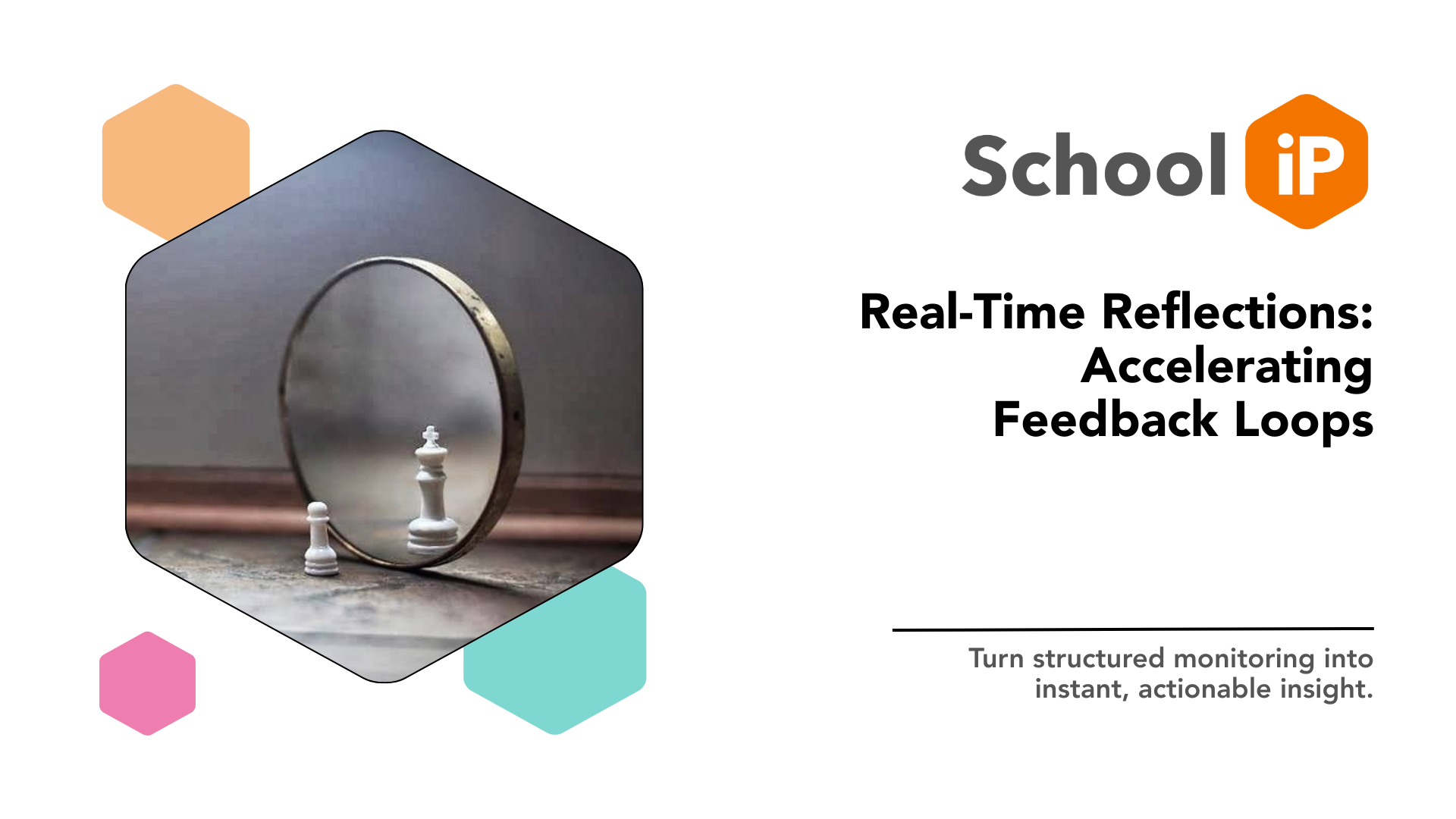Real-Time Reflections: Accelerating Feedback Loops


Artificial intelligence is opening up new ways for school leaders to work faster, spot patterns and respond to evidence in real time. From summarising trends in observations to suggesting targeted CPD, AI tools can now support the entire feedback cycle in a matter of minutes.
But before AI can do its work, schools need a strong foundation. That is where SchooliP comes in.
SchooliP supports leaders to carry out and capture observations, learning walks and reviews in a structured, consistent format. With fully customisable templates and a centralised digital record, it ensures that high-quality evidence is gathered at every stage. This data can then be exported and analysed using AI tools such as ChatGPT or NotebookLM to generate instant feedback, next steps and staff development insights.
The result is a complete feedback loop that is both efficient and impactful.
Leaders are no strangers to data. But turning that data into clear insights quickly remains a challenge. AI tools can now support that process in practical ways, for example:
Summarising themes across multiple observations
Highlighting strengths and areas for development
Mapping evidence to teaching standards
Suggesting CPD based on recurring trends
By uploading anonymised SchooliP exports into AI platforms, schools can generate strategic overviews in minutes. These insights are not just faster to produce, they are also easier to share and act upon.
AI cannot replace professional judgment, but it can speed up the path from evidence to action. To make that possible, SchooliP provides:
Use digital templates to carry out learning walks, lesson observations or coaching sessions. Align each form to school improvement priorities or national standards.
Keep all evidence in one secure place. SchooliP makes it easy to manage records across subjects, phases and staff groups.
Once data is collected, it can be exported in formats ready for AI tools to interpret. No manual reformatting is needed.
SchooliP is not an AI platform. Instead, it acts as the enabler that makes AI useful. It provides the clarity, structure and consistency that analysis tools need in order to produce meaningful results.
If your school is exploring how to use AI in monitoring, here are some steps to begin:
Design your SchooliP templates to capture what you want AI to analyse
Ensure consistent use across reviewers so your exported data is reliable
Use anonymised exports to maintain data protection when working with third-party tools
Test with one AI tool first and refine your prompts to suit your context
Use AI output to support discussion, not replace professional dialogue
Speed matters. The quicker leaders can identify trends and act, the stronger the outcomes for staff and students. By combining SchooliP’s structured monitoring tools with the power of AI-generated analysis, schools can create a cycle of continuous improvement that is both immediate and sustainable.
Feedback in the moment leads to change over time.